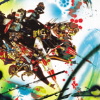 As it turns out, Bi-Conicals of the Rammellzeeisn't the guy's first full-length: Tri-Eight squeezed out two editionsand an instrumental version of this one late last year, though it lookslike the two albums were recorded more or less concurrently. Gomma,however, appears to have gotten the better pile of tapes out of thedeal, as the variety of producers on Bi-Conicals provides arange of sounds that is sorely lacking from DJ Kensei's beatwork here.Instead, the Japanese hip-hop and house maestro puts together aframework of synth noises that you probably heard too much of duringWax Trax!'s heyday, and while there's nothing much wrong with the MeatBeat bleeping of "Soldiers" or the KMFDM-style riffage on "I BeRamm:Ell:Zee:Zee", their familiarity draws attention to how thin andrepetitive some of the mixes are; a similar problem comes up when thevocals are so drenched in effects that they're practicallyunintelligible. Meanwhile, Ramm's usual style of delivery, a berserkmatching up of broken and rejigged cliches with surreal streetnarrative, succumbs to what I hope is just lousy improvising on "In theBack of the Caddy Shack", saddling an almost funky backing track with apathetic, and largely one-sided, conversation with a twenty-dollarwhore. In still other cases, relatively solid tracks are derailed byidiotic choruses or painful samples. With bad production decisions allaround, only a couple of cuts manage to avoid feeling twice as long asthey need to be: the title track's energetic (and only slightlyprocessed) vocals don't hew too closely to the simple and heavy mainrhythm, but they fit well with the anthemic chorus, and "New Meaning"opens the disc with some fun gurgling sounds and some of the mostmelodic vocoder work I've heard in a while. Even so, right on down tothe guest guitarists, everybody on this album has done betterelsewhere.
As it turns out, Bi-Conicals of the Rammellzeeisn't the guy's first full-length: Tri-Eight squeezed out two editionsand an instrumental version of this one late last year, though it lookslike the two albums were recorded more or less concurrently. Gomma,however, appears to have gotten the better pile of tapes out of thedeal, as the variety of producers on Bi-Conicals provides arange of sounds that is sorely lacking from DJ Kensei's beatwork here.Instead, the Japanese hip-hop and house maestro puts together aframework of synth noises that you probably heard too much of duringWax Trax!'s heyday, and while there's nothing much wrong with the MeatBeat bleeping of "Soldiers" or the KMFDM-style riffage on "I BeRamm:Ell:Zee:Zee", their familiarity draws attention to how thin andrepetitive some of the mixes are; a similar problem comes up when thevocals are so drenched in effects that they're practicallyunintelligible. Meanwhile, Ramm's usual style of delivery, a berserkmatching up of broken and rejigged cliches with surreal streetnarrative, succumbs to what I hope is just lousy improvising on "In theBack of the Caddy Shack", saddling an almost funky backing track with apathetic, and largely one-sided, conversation with a twenty-dollarwhore. In still other cases, relatively solid tracks are derailed byidiotic choruses or painful samples. With bad production decisions allaround, only a couple of cuts manage to avoid feeling twice as long asthey need to be: the title track's energetic (and only slightlyprocessed) vocals don't hew too closely to the simple and heavy mainrhythm, but they fit well with the anthemic chorus, and "New Meaning"opens the disc with some fun gurgling sounds and some of the mostmelodic vocoder work I've heard in a while. Even so, right on down tothe guest guitarists, everybody on this album has done betterelsewhere.
Two new shows just for you. We have squeezed out two extended release episodes for this weekend to get you through this week. They contain mostly new songs but there's also new issues from the vaults. The first show features music from Rider/Horse, Mint Field, Robert Aiki Aubrey Lowe, Anastasia Coope, ISAN, Stone Music, La Securite, Bark Psychosis, Jon Rose, Master Wilburn Burchette, Umberto, Wand, Tim Koh, Sun An, and Memory Drawings. The second episode has music by Laibach, Melt-Banana, Chuck Johnson, X, K. Yoshimatsu, Dorothy Carter, Pavel Milyakov, Violence Gratuite, Mark Templeton, Dummy, Endon, body / negative, Midwife, Alberto Boccardi, Divine. Cow in Maui from Veronika in Vienna. Get involved: subscribe, review, rate, share with your friends, send images! |



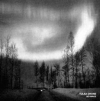 Wading out of the woods and into the snow with a sound all their own,Tulsa Drone cause a range of emotions to well up on their powerfuldebut. Guitar/bass/drums/hammered dulcimer is not a combination onehears everyday, and as soon as the slight strangeness of it all faded Isettled in for whatever came next. Lo and behold, they have somethinghere, as this is the most unique and powerful music I have heard inmonths. It puts me in a place of complete wonder, like a little boystepping into a new experience like flying on an airplane for the firsttime. Tulsa Drone have been using trains in their promotional postersrecently, and to me that's extremely appropriate, as their music is adrifter's: hopping train car to train car looking for work in the nexttown, trying desperately to improve a station of life that was down andout to begin with. The Drone in their name is a bit of a misnomer tome, as there is no real drone in this music, no constant that echoes inand out on itself that continues for minutes. That's not a complaint,though, as they've certainly manufactured some fine moments on theirfirst recording. The melodic beginnings of "Chiaroscuro" are stirring,with production heavy on the bass side, and a genuine feel for thedramatic. As the guitars flare, the bass and dulcimer rise to meetthem, then all tumble like lovers together back to the base. "Vendetta"steps up the dulcimer to main instrument status, letting everythingbuild around it, with Spanish guitar and arpreggios painting thepicture of the score that needs settling. Occasionally there are hornsor other sounds added for a little spice or variation, but for the mostpart the music is the same core. I found it fascinating that they foundso many different approaches with the same instruments, and so manythemes to operate under. Some hear "drone" and think "boring." Ifnothing else Tulsa Drone prove that wrong, but at their best the createa new horizon to look towards.
Wading out of the woods and into the snow with a sound all their own,Tulsa Drone cause a range of emotions to well up on their powerfuldebut. Guitar/bass/drums/hammered dulcimer is not a combination onehears everyday, and as soon as the slight strangeness of it all faded Isettled in for whatever came next. Lo and behold, they have somethinghere, as this is the most unique and powerful music I have heard inmonths. It puts me in a place of complete wonder, like a little boystepping into a new experience like flying on an airplane for the firsttime. Tulsa Drone have been using trains in their promotional postersrecently, and to me that's extremely appropriate, as their music is adrifter's: hopping train car to train car looking for work in the nexttown, trying desperately to improve a station of life that was down andout to begin with. The Drone in their name is a bit of a misnomer tome, as there is no real drone in this music, no constant that echoes inand out on itself that continues for minutes. That's not a complaint,though, as they've certainly manufactured some fine moments on theirfirst recording. The melodic beginnings of "Chiaroscuro" are stirring,with production heavy on the bass side, and a genuine feel for thedramatic. As the guitars flare, the bass and dulcimer rise to meetthem, then all tumble like lovers together back to the base. "Vendetta"steps up the dulcimer to main instrument status, letting everythingbuild around it, with Spanish guitar and arpreggios painting thepicture of the score that needs settling. Occasionally there are hornsor other sounds added for a little spice or variation, but for the mostpart the music is the same core. I found it fascinating that they foundso many different approaches with the same instruments, and so manythemes to operate under. Some hear "drone" and think "boring." Ifnothing else Tulsa Drone prove that wrong, but at their best the createa new horizon to look towards. "Help wanted: former lead singer of grunge and hard rock outfits needsnew direction for forthcoming solo record. Friends and former bandmembers are welcome to apply within." Mark Lanegan might not haveadvertised quite like this for his debut on Beggars, but that's what heended up with for this EP intended as a primer for the record laterthis year. Queens Nick Oliveri and Josh Homme play a number ofinstruments on the majority of the songs and even share songwritingduties, and Greg Dulli — Lanegan's current partner-in-crime from theGutter Twins project — adds flavor here and there. With a roster likethat, the music is bound to be a departure from previous solo records;the question is whether it is a welcome one. I'm holding out hope, butthis group of songs doesn't inspire much confidence. This is chancestaken, trying out a few strange licks and larks, and floating them outfor good measure. There are still strong songs, and if those are anindication of the upcoming full-length, I have no reason to worry. It'sthe misses that bring out a little anxiety. Sure, the cackle andplayfulness that open the EP is pure sex, bump and grind and choircoos, with scorching leads courtesy of Homme. The next track, though,flows into the inane, with Chris Goss singing "He's got the wholeworld..." and Lanegan riffing spoken word over the top. Eventuallythere's a multitude of voices, and then it fades to nothing, or nothingof value anyway. Everywhere that classic swallowed-glass Lanegan voiceturns it out and moves it along, always perfect. It's the music thatfails him from time to time. The cover, obligatory for most EPs thesedays it seems, is Captain Beefheart's "Clear Spot," and it's not worththe time or Alain Johannes' involvement, as it isn't all thatimpressive. And the piano ballad "Lexington Slow Down" is also a strainto listen to for most of it's three minutes. The rest, though is prettystrong and flows nicely. If Lanegan left most of the experimentation tothe wayside on his album, more the better. If not, it's high time tomorph again.
"Help wanted: former lead singer of grunge and hard rock outfits needsnew direction for forthcoming solo record. Friends and former bandmembers are welcome to apply within." Mark Lanegan might not haveadvertised quite like this for his debut on Beggars, but that's what heended up with for this EP intended as a primer for the record laterthis year. Queens Nick Oliveri and Josh Homme play a number ofinstruments on the majority of the songs and even share songwritingduties, and Greg Dulli — Lanegan's current partner-in-crime from theGutter Twins project — adds flavor here and there. With a roster likethat, the music is bound to be a departure from previous solo records;the question is whether it is a welcome one. I'm holding out hope, butthis group of songs doesn't inspire much confidence. This is chancestaken, trying out a few strange licks and larks, and floating them outfor good measure. There are still strong songs, and if those are anindication of the upcoming full-length, I have no reason to worry. It'sthe misses that bring out a little anxiety. Sure, the cackle andplayfulness that open the EP is pure sex, bump and grind and choircoos, with scorching leads courtesy of Homme. The next track, though,flows into the inane, with Chris Goss singing "He's got the wholeworld..." and Lanegan riffing spoken word over the top. Eventuallythere's a multitude of voices, and then it fades to nothing, or nothingof value anyway. Everywhere that classic swallowed-glass Lanegan voiceturns it out and moves it along, always perfect. It's the music thatfails him from time to time. The cover, obligatory for most EPs thesedays it seems, is Captain Beefheart's "Clear Spot," and it's not worththe time or Alain Johannes' involvement, as it isn't all thatimpressive. And the piano ballad "Lexington Slow Down" is also a strainto listen to for most of it's three minutes. The rest, though is prettystrong and flows nicely. If Lanegan left most of the experimentation tothe wayside on his album, more the better. If not, it's high time tomorph again.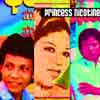 Bizarre radio collages might be the most spectacular examples of AlanBishop's peculiar style of ethnomusicology, but the fewmore-traditional "song" collections available from the Sun City Girl'sSublime Frequencies label provide equally fascinating glimpses intocultures that, while previously documented, have surely never receivedthe kind of treatment Bishop thankfully feels compelled to provide. Thesame guerilla tactics that spawned the string of Radio releases are responsible for Princess Nicotine and its predecessor, Folk and Pop Sounds of Sumatra Vol.1,both discs gathered from tapes Bishop collected over two decades oftraveling through Indonesia and Southeast Asia. In compiling hissouvenirs for release, the label owner flaunts the idiosyncratic and(to a degree) more intimate character of his collections, which, at thevery least, offer a refreshing break from over-ambitious, survey-styledcomps. Bishop's a-scholastic method also serves as introduction tomusic previously avoided by dominant, purist-oriented "world music"markets. "Folk and Pop" become blanket terms to describe an explosionof hybrid styles, mesmerizing mash-ups of traditional Burmese songforms with a range of disparate Western influences often more at oddswith each other than with their Eastern counterparts. Bishop seemsintent on granting these largely undocumented currents, "polluted" bymost ethnomusicologists' standards, the relevance they deserve, and ongrounds of this first volume alone, he has succeeded. Princesswas actually released in a shortened and very limited version back in1994, and it's no wonder the curator has decided to bring it back. Eachof the twelve tracks is an entirely distinct piece of what could becomemy favorite discovery of the year. The Burmese integrate elements ofWestern pop, psych, jazz, even fragments of generic theatre and filmmusic in such unique and self-serving ways that any referentialmaterial becomes blank fodder for compositions singular in both theiremotional immediacy and hallucinogenic grandeur. When it's at allenergetic, the music is utterly wild, with discordant scales collidingon frantic solo flights and cymbal bursts punctuating each intricateturn and jump of the vocalists, often engaged in the intenselystructured call-and-response to which much of the music hinges withmiraculous precision. The calmer tracks are no less astounding;propelled by reeds, violin, chirping flutes, and the incomparable,entirely characteristic Burmese approach to the piano, they are allstrangely psychedelic, breezy but charged with a jazzist edge andenough abrupt shifts and tangential melodic parts to fit with Westernprog definitions. One song sounds like a warped version of antiqueDisney film music; another takes what could be the saccharine,string-laden climax to an off-Broadway ham hit and, through theaddition of only a few thin piano lines and other percussive scatter,creates a string of delicate, truly moving passages. Bishop does notlie when he talks about the "very distinct" nature of this music,something that is unfortunately hard to communicate without relying onWestern points of reference. I will say that previous exposure toseveral of the scant Burmese collections available domestically (evento the Sun City Girls' more adventurous ethnic borrowing) has in no wayprepared me for the treasures of Princess, and, given Sublime Frequencies' rapid release schedule, a second volume should not be far behind.
Bizarre radio collages might be the most spectacular examples of AlanBishop's peculiar style of ethnomusicology, but the fewmore-traditional "song" collections available from the Sun City Girl'sSublime Frequencies label provide equally fascinating glimpses intocultures that, while previously documented, have surely never receivedthe kind of treatment Bishop thankfully feels compelled to provide. Thesame guerilla tactics that spawned the string of Radio releases are responsible for Princess Nicotine and its predecessor, Folk and Pop Sounds of Sumatra Vol.1,both discs gathered from tapes Bishop collected over two decades oftraveling through Indonesia and Southeast Asia. In compiling hissouvenirs for release, the label owner flaunts the idiosyncratic and(to a degree) more intimate character of his collections, which, at thevery least, offer a refreshing break from over-ambitious, survey-styledcomps. Bishop's a-scholastic method also serves as introduction tomusic previously avoided by dominant, purist-oriented "world music"markets. "Folk and Pop" become blanket terms to describe an explosionof hybrid styles, mesmerizing mash-ups of traditional Burmese songforms with a range of disparate Western influences often more at oddswith each other than with their Eastern counterparts. Bishop seemsintent on granting these largely undocumented currents, "polluted" bymost ethnomusicologists' standards, the relevance they deserve, and ongrounds of this first volume alone, he has succeeded. Princesswas actually released in a shortened and very limited version back in1994, and it's no wonder the curator has decided to bring it back. Eachof the twelve tracks is an entirely distinct piece of what could becomemy favorite discovery of the year. The Burmese integrate elements ofWestern pop, psych, jazz, even fragments of generic theatre and filmmusic in such unique and self-serving ways that any referentialmaterial becomes blank fodder for compositions singular in both theiremotional immediacy and hallucinogenic grandeur. When it's at allenergetic, the music is utterly wild, with discordant scales collidingon frantic solo flights and cymbal bursts punctuating each intricateturn and jump of the vocalists, often engaged in the intenselystructured call-and-response to which much of the music hinges withmiraculous precision. The calmer tracks are no less astounding;propelled by reeds, violin, chirping flutes, and the incomparable,entirely characteristic Burmese approach to the piano, they are allstrangely psychedelic, breezy but charged with a jazzist edge andenough abrupt shifts and tangential melodic parts to fit with Westernprog definitions. One song sounds like a warped version of antiqueDisney film music; another takes what could be the saccharine,string-laden climax to an off-Broadway ham hit and, through theaddition of only a few thin piano lines and other percussive scatter,creates a string of delicate, truly moving passages. Bishop does notlie when he talks about the "very distinct" nature of this music,something that is unfortunately hard to communicate without relying onWestern points of reference. I will say that previous exposure toseveral of the scant Burmese collections available domestically (evento the Sun City Girls' more adventurous ethnic borrowing) has in no wayprepared me for the treasures of Princess, and, given Sublime Frequencies' rapid release schedule, a second volume should not be far behind.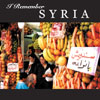 Sublime Frequencies' first double CD continues with the amateurtravelogue aesthetic that's infused nearly all the label's releases todate, and to my ears it is the most successful, in its transportingpower and focused depiction of the rich sound world available in acountry whose cultural legacy has long been consciously ignored byWestern media. Essentially an audio scrapbook assembled by Mark Gergisfrom field recordings made during two trips to Syria near the turn ofthe century, I Rememberperfectly accommodates Gergis' cut-up skills, so essential to hisprevious work in Porest and Monopause. His creation distances itselffrom Alan Bishop's radio collages by assuming a considerably morerelaxed flow, one that allows for the development of some nice thematicundercurrents. Though I Remember contains plenty of radiocaptures, there is little that compares to Bishop's schizophrenicdial-spinning, and the amount of shortwave noisemaking is surprisinglysmall given Gergis' background. A good portion of the two discs comesfrom talk radio segments of political or socially progressiveorientation. The first disc begins framed within the introduction to aprogram called "Syria Today;" later on, reports of theIsraeli/Palestinian crisis emerge alongside light-hearted Youth Radioproductions and one enlightening broadcast entitled "Arab Women inFocus." Some of the most interesting moments are the fragments ofconversations Gergis has with a variety of citizens, including a35-year old homosexual in Aleppo whose wife remains oblivious to hislifestyle, several people eager to share criticisms of America, and agentleman who sounds like a head official of Kazib, a newly-discoveredunderground city. There are recordings from mosque interiors, weddings,nightclubs, street musicians, outdoor markets, even the competingsounds of distorted cassette kiosks. One woman performs a "maternalbedouin" song about Saddam Hussein, presumably at Gergis' request asher hesitant, giggling delivery shows signs of embarrassment orindulgence. The collage is spliced with the expert blends, fades, andjuxtapositions that have made Porest's work so well-liked, and itcovers an immense amount of ground, seamlessly, and without anyalienating jump cuts or premature endings, something that does not holdtrue for all of Bishop's creations. Its increased notation and clearinterest in engaging the rich history and contemporary social andpolitical climates in Syria make I Remember one of the most valuable and listenable items from this great new label.
Sublime Frequencies' first double CD continues with the amateurtravelogue aesthetic that's infused nearly all the label's releases todate, and to my ears it is the most successful, in its transportingpower and focused depiction of the rich sound world available in acountry whose cultural legacy has long been consciously ignored byWestern media. Essentially an audio scrapbook assembled by Mark Gergisfrom field recordings made during two trips to Syria near the turn ofthe century, I Rememberperfectly accommodates Gergis' cut-up skills, so essential to hisprevious work in Porest and Monopause. His creation distances itselffrom Alan Bishop's radio collages by assuming a considerably morerelaxed flow, one that allows for the development of some nice thematicundercurrents. Though I Remember contains plenty of radiocaptures, there is little that compares to Bishop's schizophrenicdial-spinning, and the amount of shortwave noisemaking is surprisinglysmall given Gergis' background. A good portion of the two discs comesfrom talk radio segments of political or socially progressiveorientation. The first disc begins framed within the introduction to aprogram called "Syria Today;" later on, reports of theIsraeli/Palestinian crisis emerge alongside light-hearted Youth Radioproductions and one enlightening broadcast entitled "Arab Women inFocus." Some of the most interesting moments are the fragments ofconversations Gergis has with a variety of citizens, including a35-year old homosexual in Aleppo whose wife remains oblivious to hislifestyle, several people eager to share criticisms of America, and agentleman who sounds like a head official of Kazib, a newly-discoveredunderground city. There are recordings from mosque interiors, weddings,nightclubs, street musicians, outdoor markets, even the competingsounds of distorted cassette kiosks. One woman performs a "maternalbedouin" song about Saddam Hussein, presumably at Gergis' request asher hesitant, giggling delivery shows signs of embarrassment orindulgence. The collage is spliced with the expert blends, fades, andjuxtapositions that have made Porest's work so well-liked, and itcovers an immense amount of ground, seamlessly, and without anyalienating jump cuts or premature endings, something that does not holdtrue for all of Bishop's creations. Its increased notation and clearinterest in engaging the rich history and contemporary social andpolitical climates in Syria make I Remember one of the most valuable and listenable items from this great new label. Composed mostly of wandering guitar echoes and fuzzed-out machine noise or rhythms, the heart of these songs lay in their zen-like construction. The eleven songs that make up this record drift by in a fog that sends all images into slow-motion: light becomes amazingly intense and the simplest of movements stand as monuments to the beauty of the body.
Composed mostly of wandering guitar echoes and fuzzed-out machine noise or rhythms, the heart of these songs lay in their zen-like construction. The eleven songs that make up this record drift by in a fog that sends all images into slow-motion: light becomes amazingly intense and the simplest of movements stand as monuments to the beauty of the body.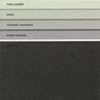 A league of distinguished noisemen emerge with the subtle frayedfilaments of the two extended piece "Brackwater." The title track emitsa genuinely blazing low-fi double-take on what could either be a recordgoin' round and round doused in kerosene, or perhaps the splitting ofthe atom. This sounds like a grand procedure actually, almost like asquared off experiment between a quartet that's been choreographed tosync perfectly. Otomo Yoshihide's turntables blend incredibly well withTomas Korber's synthesized electronic play as ErikM and ToshimaruNakamura mix and otherwise dial-in to add micro-effects and organicfeedback. "Brackwater" is like an interactive carpet of static beingfine tuned, there's something really palpably textural about theircombination playing, with its heart monitor central to the post-climaxof the track, the beat goes on. Twisting into cold hallway like spaces,the entire shift of drama flows into the doubt of nighttime. Korber'sguitar is only hinted at, but makes for unpresumptuous but perceptibleeffect. The addendum "And A Slice of Bread" buzzes propitiously. Thebuild is live, the staging is simple, the panorama widens. They havefiltered much of the general angst normally heard in works that rely onthe effects of their own technical difficulties (feedback, static,whitenoise, other "on-air" sounds). The track renders the artifice ofan arboretum, perhaps created in a communications lab, somethingfuturistic, scientific, lost in a time warp. This one calls for volumeto attain its excessive subtleties.
A league of distinguished noisemen emerge with the subtle frayedfilaments of the two extended piece "Brackwater." The title track emitsa genuinely blazing low-fi double-take on what could either be a recordgoin' round and round doused in kerosene, or perhaps the splitting ofthe atom. This sounds like a grand procedure actually, almost like asquared off experiment between a quartet that's been choreographed tosync perfectly. Otomo Yoshihide's turntables blend incredibly well withTomas Korber's synthesized electronic play as ErikM and ToshimaruNakamura mix and otherwise dial-in to add micro-effects and organicfeedback. "Brackwater" is like an interactive carpet of static beingfine tuned, there's something really palpably textural about theircombination playing, with its heart monitor central to the post-climaxof the track, the beat goes on. Twisting into cold hallway like spaces,the entire shift of drama flows into the doubt of nighttime. Korber'sguitar is only hinted at, but makes for unpresumptuous but perceptibleeffect. The addendum "And A Slice of Bread" buzzes propitiously. Thebuild is live, the staging is simple, the panorama widens. They havefiltered much of the general angst normally heard in works that rely onthe effects of their own technical difficulties (feedback, static,whitenoise, other "on-air" sounds). The track renders the artifice ofan arboretum, perhaps created in a communications lab, somethingfuturistic, scientific, lost in a time warp. This one calls for volumeto attain its excessive subtleties. The third full-length album from Yoshimi P-We's female rock quartet, Kila Kila Kila refuses to immediately deliver the goods as generously or bountifully as their previous two albums of densely layered psychedelia. Green and Gold and Feather Float were jam-packed with kaleidoscopic melodies and shimmering guitars, creating thick syrupy whirlpools of hypnotic grooves with saccharine group harmonies and bright, sparkling production. Kila Kila Kila is a more difficult proposition, with Yoshimi P-We veering away from her pop tendencies, preferring instead to emphasize the more abstract and improvisatory elements of her music.
The third full-length album from Yoshimi P-We's female rock quartet, Kila Kila Kila refuses to immediately deliver the goods as generously or bountifully as their previous two albums of densely layered psychedelia. Green and Gold and Feather Float were jam-packed with kaleidoscopic melodies and shimmering guitars, creating thick syrupy whirlpools of hypnotic grooves with saccharine group harmonies and bright, sparkling production. Kila Kila Kila is a more difficult proposition, with Yoshimi P-We veering away from her pop tendencies, preferring instead to emphasize the more abstract and improvisatory elements of her music.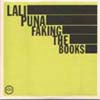 There is no doubt that the pressure has built up for a strong follow-up to the astounding 2001 album Scary World Theory: it was gloriously received by critical acclaim worldwide, followed by trans-continental tours, and a decent amount of well-publicized respect by some of the biggest names in modern rock and pop music.
There is no doubt that the pressure has built up for a strong follow-up to the astounding 2001 album Scary World Theory: it was gloriously received by critical acclaim worldwide, followed by trans-continental tours, and a decent amount of well-publicized respect by some of the biggest names in modern rock and pop music.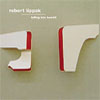 Robert Lippok (To Rococo Rot) has taken Komëit's (Julia Kliemann and Chris Flor) recording "Falling into Place" apart to remodel its contents. He's kept the essential vocals, guitar lines and other critical signatures from the original and just enhanced their lightness of being.
Robert Lippok (To Rococo Rot) has taken Komëit's (Julia Kliemann and Chris Flor) recording "Falling into Place" apart to remodel its contents. He's kept the essential vocals, guitar lines and other critical signatures from the original and just enhanced their lightness of being.
